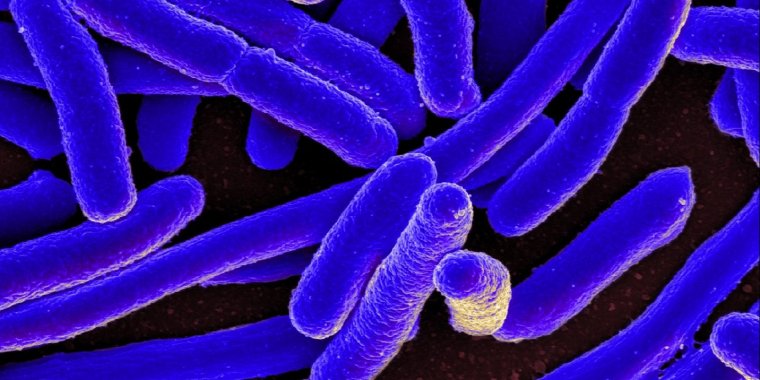| News / Science News |
Bacteria change behavior to tackle tiny obstacle course
A tiny obstacle course for bacteria has shown researchers how E. coli changes its behavior to rapidly clear obstructions to food.

Colorized scanning electron micrograph of E. coli grown in culture. Photo: NIAID
Scientists at Carnegie Mellon University (CMU), the University of Pittsburgh and the Salk Institute for Biological Studies report that the "swim and tumble" behavior bacteria use to move toward food or away from poisons changes when the bacteria encounter obstacles.
In the real world, bacteria always encounter lots of obstacles. E. coli, for instance, inhabits the complicated terrain of the gastrointestinal tract. Yet previous studies of chemotaxis -- the way bacteria move toward a higher concentration of food or away from concentrations of poisons -- usually have been done in unobstructed chambers.
The researchers designed tiny microfluidic chambers and placed evenly distributed square and round obstacles in them. When the scientists tested E. coli inside these obstacle courses, they were surprised at the speed at which the bacteria found a food source.
Bacteria are known to communicate with each other by secreting chemicals. The communication informs bacteria as they try to get around an obstacle. A closer look at the bacteria, however, also showed a change in behavior.
The findings have implications for tracking how malignant cells spread through the body or how infections might be treated.
Finding out how bacteria quickly get to food is contributing to solutions for many human problems, including better ways of conducting search and rescue missions. (National Science Foundation)
YOU MAY ALSO LIKE



